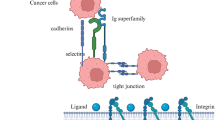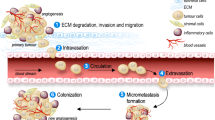Abstract
Focal adhesion kinase (FAK), a nonreceptor tyrosine kinase protein, acts as an early modulator of integrin signaling cascade, regulating basic cellular functions. In transformed cells, unopposed FAK signaling has been considered to promote tumor growth, progression, and metastasis. The aim of this study was to assess the role of FAK in rat osteosarcoma OSR-6 cells. OSR-6 cells were transfected with PGPU6/GFP/shNC (shNC), and PGPU6/GFP/FAK-2434 (shRNA-2434), separately. Expression of FAK was detected by Real-time PCR and Western blots. MTT assay was used to examine changes in cell proliferation. Cell apoptosis was analyzed by flow cytometry. The expression of caspase-3,-7,-9 was measured by Western blots. The expression of FAK in OSR-6 cells significantly decreased in shRNA-2434 group in contrast to the control group (P < 0.01). Cell proliferation was inhibited by shRNA-2434 and shRNA-2434+ cisplatin, and the effects were clearly enhanced when cells were treated with anticancer agents. The level of cell apoptosis in shRNA-2434 and shRNA-2434+ cisplatin group was higher than that in the control group (P < 0.01). The current data support evidence that down-regulation of FAK could induce rat osteosarcoma cells (OSR-6) apoptosis through the caspase-dependent cell death pathway. Inhibition of the kinases may be important for therapies designed to enhance the apoptosis in osteosarcoma.



Similar content being viewed by others
References
Thompson, R. C, Jr, Cheng, E. Y., Clohisy, D. R., Perentesis, J., Manivel, C., & Le, C. T. (2002). Clinical Orthopaedics and Related Research, 397, 240–347.
Arndt, C. A., & Crist, W. M. (1999). The New England Journal of Medicine, 341, 342–352.
Bacci, G., Longhi, A., Bertoni, F., Bacchini, P., Ruggeri, P., Versari, M., et al. (2005). Primary high-grade osteosarcoma: Comparison between preadolescent and older patients. Journal of Pediatric Hematology/Oncology, 27, 129–134.
Yang, C., Choy, E., Hornicek, F. J., Wood, K. B., Schwab, J. H., Liu, X., et al. (2011). Histone deacetylase inhibitor (HDACI) PCI-24781 potentiates cytotoxic effects of doxorubicin in bone sarcoma cells. Cancer Chemotherapy and Pharmacology, 67, 439–446.
Wittenburg, L. A., Bisson, L., Rose, B. J., Korch, C., & Thamm, D. H. (2011). The histone deacetylase inhibitor valproic acid sensitizes human and canine osteosarcoma to doxorubicin. Cancer Chemotherapy and Pharmacology, 67, 83–92.
Lipfert, L., Haimovich, B., Schaller, M. D., Cobb, B. S., Parsons, J. T., & Brugge, J. S. (1992). Integrin-dependent phosphorylation and activation of the protein tyrosine kinase pp125FAK in platelets. Journal of Cell Biology, 119, 905–912.
Zachary, I., Sinnett-Smith, J., & Rozengurt, E. (1992). Bombesin, vasopressin, and endothelin stimulation of tyrosine phosphorylation in Swiss 3T3 cells. Identification of a novel tyrosine kinase as a major substrate. Journal of Biological Chemistry, 267, 19031–19034.
Ilic, D., Furuta, Y., Kanazawa, S., Takeda, N., Sobue, K., Nakatsuji, N., et al. (1995). Reduced cell motility and enhanced focal adhesion contact formation in cells from FAK-deficient mice. Nature, 377, 539–544.
Cary, L. A., Chang, J. F., & Guan, J. L. (1996). Stimulation of cell migration by overexpression of focal adhesion kinase and its association with Src and Fyn. Journal of Cell Science, 109, 1787–1794.
Li, S., Kim, M., Hu, Y. L., Jalali, S., Schlaepfer, D. D., Hunter, T., et al. (1997). Fluid shear stress activation of focal adhesion kinase. Linking to mitogen-activated protein kinases. Journal of Biological Chemistry, 272, 30455–30462.
Levy, P., Robin, H., Kornprobst, M., Capeau, J., & Cherqui, G. (1989). Enterocytic differentiation of human Caco-2 cell line correlates with alterations in integrin signaling. Journal of Cellular Physiology, 177, 618–627.
Xu, L. H., Owens, L. V., Sturge, G. C., Yang, X., Liu, E. T., Craven, R. J., et al. (1996). Attenuation of the expression of the focal adhesion kinase induces apoptosis in tumor cells. Cell Growth & Differentiation, 7, 413–418.
Hauck, C. R., Hsia, D. A., & Schlaepfer, D. D. (2002). The focal adhesion kinase—A regulator of cell migration and invasion. IUBMB Life, 53, 115–119.
Owens, L. V., Xu, L., Craven, R. J., Dent, G. A., Weiner, T. M., Kornberg, L., et al. (1995). Overexpression of focal adhesion kinase (p125FAK) in invasive human tumors. Cancer Research, 55, 2752–2755.
Zagzag, D., Friedlander, D. R., Margolis, B., Grumet, M., Semenza, G. L., Zhong, H., et al. (2000). Molecular events implicated in brain tumor angiogenesis and invasion. Pediatric Neurosurgery, 33, 49–55.
Jones, G., Machado, J, Jr, & Merlo, A. (2001). Loss of focal adhesion kinase (FAK) inhibits epidermal growth factor receptor dependent migration and induces aggregation of NH2-terminal FAK in the nuclei of apoptotic glioblastoma cells. Cancer Research, 61, 4978–4981.
Ek, E. T., & Choong, P. F. (2006). The role of high-dose therapy and autologous stem cell transplantation for pediatric bone and soft tissue sarcomas. Expert Review of Anticancer Therapy, 6, 225–237.
Yang, C., Hornicek, F. J., Wood, K. B., Schwab, J. H., Mankin, H., & Duan, Z. (2009). RAIDD expression is impaired in multidrug resistant osteosarcoma cell lines. Cancer Chemotherapy and Pharmacology, 64, 607–614.
Sonoda, Y., Matsumoto, Y., Funakoshi, M., Yamamoto, D., Hanks, S. K., & Kasahara, T. (2000). Anti-apoptotic role of focal adhesion kinase (FAK) induction of inhibitor-of-apoptosis proteins and apoptosis suppression by the overexpression of FAK in human leukemic cell line, HL-60. Journal of Biological Chemistry, 275, 16309–16315.
Kim, L. T., Fleming, J. B., Lopez-Guzman, C., & Nwariaku, F. (2003). Focal adhesions and associated proteins in medullary thyroid carcinoma cells. Journal of Surgical Research, 111, 177–184.
Sasaki, H., Kotsuji, F., & Tsang, B. K. (2002). Caspase 3-mediated focal adhesion kinase processing in human ovarian cancer cells: possible regulation by X-linked inhibitor of apoptosis protein. Gynecologic Oncology, 85, 339–350.
Chowdhury, I., Tharakan, B., & Bhat, G. K. (2006). Current concepts in apoptosis: The physiological suicide program revisited. Cellular & Molecular Biology Letters, 11, 506–525.
Janicke, R. U., Sprengart, M. L., Wati, M. R., & Porter, A. G. (1998). Caspase-3 is required for DNA fragmentation and morphological changes associated with apoptosis. Journal of Biological Chemistry, 273, 9357–9360.
Cande, C., Cecconi, F., Dessen, P., & Kroemer, G. (2002). Apoptosis-inducing factor (AIF): Key to the conserved caspase-independent pathways of cell death? Journal of Cell Science, 115, 4727–4734.
Beren, M. E., Giblin, J. R., Dougherty, D. V., Hoifodt, H. K., Tveit, K., & Rosenblum, M. L. (1988). Comparison of in vitro cloning assays for drug sensitivity testing of human brain tumours. British Journal of Neurosurgery, 2, 227–234.
Keane, M. M., Ettenberg, S. A., Nau, M. M., Russell, E. K., & Lipkowitz, S. (1999). Chemotherapy augments TRAIL-induced apoptosis in breast cell lines. Cancer Research, 59, 734–741.
Acknowledgments
The authors are grateful to Dr. Ping Wang (Harbin Medical University) for his technical help.
Conflict of interest
None.
Author information
Authors and Affiliations
Corresponding author
Rights and permissions
About this article
Cite this article
Yang, S., Wang, L. & Kong, Q. Depression of Focal Adhesion Kinase Induces Apoptosis in Rat Osteosarcoma OSR-6 Cells in a Caspase-Dependent Pathway. Cell Biochem Biophys 70, 765–770 (2014). https://doi.org/10.1007/s12013-014-9979-3
Published:
Issue Date:
DOI: https://doi.org/10.1007/s12013-014-9979-3




